
A long time ago, I worked at a dry cleaning shop in St. Louis. It was December, and we had a weeklong bout of super-cold weather. The temperature dropped to 0° F at night, and just got up into the teens during the day. I worked inside where the temperature was always nice and warm, but the delivery guy had to go out in the cold every day. Before the cold front came through, the daytime temperature was in the 30s and 40s Fahrenheit, and he’d go out in just a short sleeve T-shirt, pants, and shoes. When the daytime temperatures dropped to the teens, he would put on a light jacket over his T-shirt.
Everyone has a different sense of temperature. My coworker was a large guy whose job, aside from driving, kept him moving. He needed a lot of cooling. I, on the other hand, had trouble keeping my 6-ft. 2-in. 160-lb. body warm. I could grasp the concept of him not being cold, but my body shivered to see him outside on those cold days. I imagine he was a person who, in summer, would turn the air conditioner thermostat way down.
And that’s our topic for today. Some people like to have their air conditioners set to keep the house really cold—like 68°F cold. I’m not here to judge your thermal preferences. Everyone’s internal furnace runs at their own internal set point. But if you set the AC thermostat really low like that, there may be consequences. Here are the main potential problems you should be aware of the next time you head for the thermostat:
1. Mold growth
As I’ve written here many times, the key to preventing “accidental dehumidification” is to keep humidity low or surfaces warm. The colder you keep the indoor air in your home, the colder the walls, ceilings, floors, and windows will be. When water vapor from the air gets into the porous materials in those building assemblies, you have an ideal place to grow mold.

Some of that mold may be visible inside your house, but you may well end up with an invisible mold problem that still affects your indoor air quality. The photo above shows mold growing on the back side of the drywall on an exterior wall. This can happen even if the humidity in the house is low because humid outdoor air can leak into the wall cavities if they’re not sealed tightly.
2. Wood rot
Curt Kinder, an HVAC contractor in Jacksonville, Fl., and a longtime commenter in the Energy Vanguard Blog, talks about houses he’s seen “totaled” by keeping the thermostat too low. That moisture from outdoors leaking into the walls, floors, and ceilings can rot the wood in addition to growing mold.
3. Condensation on air conditioner vents
Keeping the house colder means the metal AC vents will be colder. Even with less humidity in the house, those surfaces may be below the dew point. See my article from last month, Why Do Air Conditioning Vents Sweat?
4. Condensation on ducts
With the air conditioner running longer, the ducts will get colder, too. If they’re in an attic, crawlspace, or basement with high-dew-point air, they’re likely to be dripping. If the attic ducts are buried in insulation, they’re even more likely to have condensation, which then can drip down onto the ceiling and create ugly water spots…and possibly grow mold.
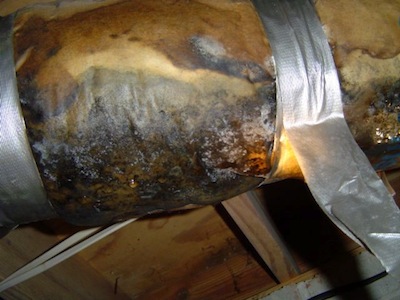
If your ducts have paper-faced insulation on them, as shown above, that condensation also can grow mold.
5. Increased duct leakage and infiltration
The more your air conditioner runs, the more it leaks. If you have a well-sealed duct system, this isn’t that big a deal. If your ducts are leaky, they’ll be leaking for a longer amount of time each day to keep your house cold. If you have unbalanced duct leakage, you also get more infiltration, so it hurts you twice in that case.
6. Need for larger air conditioning capacity
In our HVAC design work, we typically use the indoor design conditions recommended by the Air Conditioning Contractors of America (ACCA): 75° F and 50% relative humidity. There’s usually a little cushion in the capacity we specify but probably not enough to get your house down to 68° F when the outdoors is at your local design temperature.
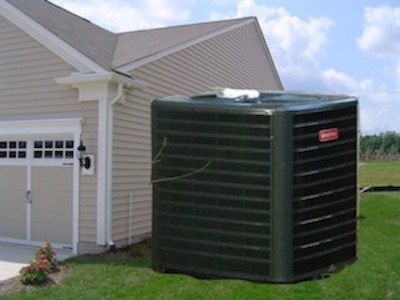
7. Reduced energy efficiency
With colder air in the house, the air conditioner gets colder air coming into the system for further cooling. That means there’s less heat for the air conditioner to remove from the return air, resulting in an evaporator coil that gets colder. John Proctor showed that colder evaporator coils lead to lower efficiency. (He was discussing one of the flaws with zoning bypass ducts, but the same principle applies, no matter what makes the coil colder.)
8. Increased energy use
This isn’t the same is number 7. Even if somehow the AC was magically able to run at the same efficiency when keeping the house colder, it still uses more energy because it runs more.
9. More frequent filter changes
First, the good news: If you have good filtration set up with your air conditioner, you’ll have cleaner air because the air will be cycling through the system more often. The bad news is you’ll have to change the filters more frequently. And if you don’t, the air flow will drop, possibly freezing the coil or damaging the compressor.
10. More energy for heat-pump water heater
OK, maybe you don’t have a heat-pump water heater (yet), but I got one last September and I love it. It’s in my basement, and I’ve been watching the energy use change with basement temperature. I’ve got a full article on this coming soon, but here’s a sneak peek at this year’s energy use for my Rheem Performance Platinum.
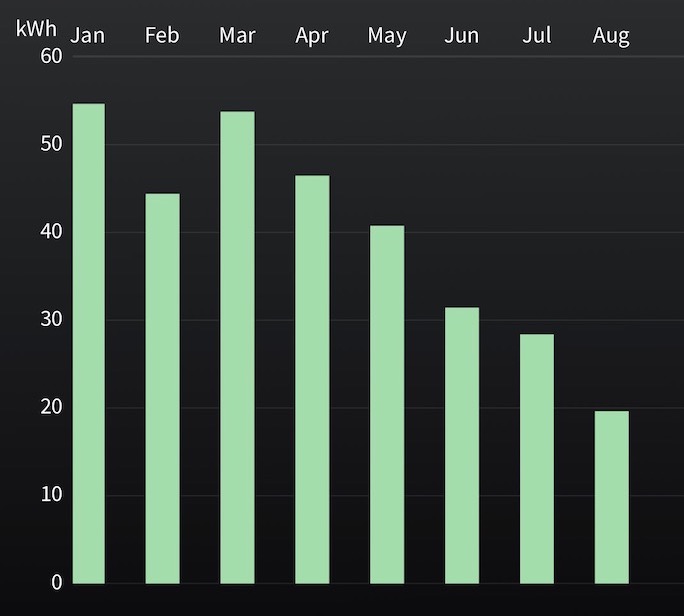
That decline in monthly electricity consumption is due solely to higher temperatures in the basement. I haven’t measured the hot water we’ve used, but if anything, that’s gone up because I’ve been working from home since 13 March. We average less than 1 kilowatt-hour (kWh) per day in the summer and close to 2 kWh per day in the winter.
Advice for those who like it cold
If you’re one of those people who has to have it cold, you should be aware of the potential problems I’ve listed above. Still want that thermostat at 68°F? Pay attention to the indoor and outdoor dew points, especially in comparison to the temperature set point inside the house. If you keep the house at 68°F and the outdoor dew point gets up into the 70s Fahrenheit every day, you may have started a biology experiment inside your walls. A moisture meter can tell you if your walls are too wet. To avoid a wet, rotting house, you need a really good air barrier on the outside of your walls to keep that humid air out. Also, check your supply vents and ducts for condensation. Of course, dropping the indoor air temperature with air conditioning isn’t the only way to keep cool. Combining AC with air movement from fans might be enough to get your house out of the danger zone.
When I moved to St. Louis for grad school at Washington University in the summer of 1983, I would have loved to have any air conditioning at all. Instead, I moved into an old apartment near the Loop, and had to keep cool with only a fan during a hot summer when the temperature hit 103°F. But I sure was happy when I discovered the milkshakes at Ted Drewes!
_________________________________________________________________________
Allison Bailes of Atlanta, Georgia, is a speaker, writer, building science consultant, and founder of Energy Vanguard. He is also the author of the Energy Vanguard Blog. You can follow him on Twitter at @EnergyVanguard.
Weekly Newsletter
Get building science and energy efficiency advice, plus special offers, in your inbox.





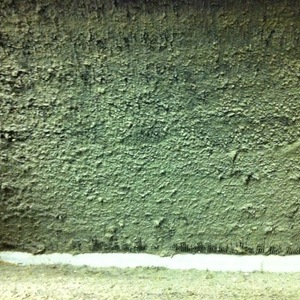
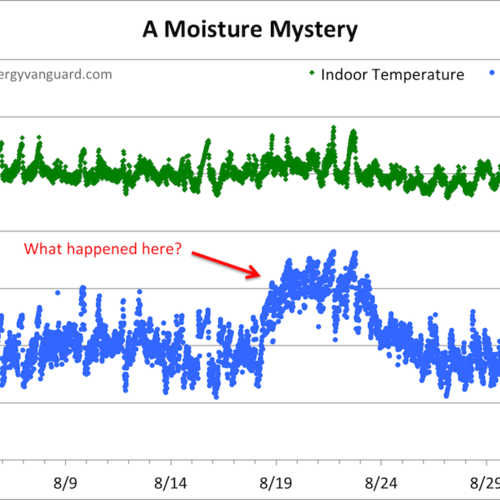
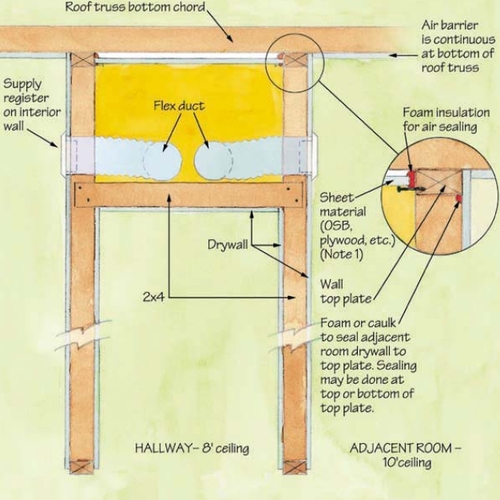
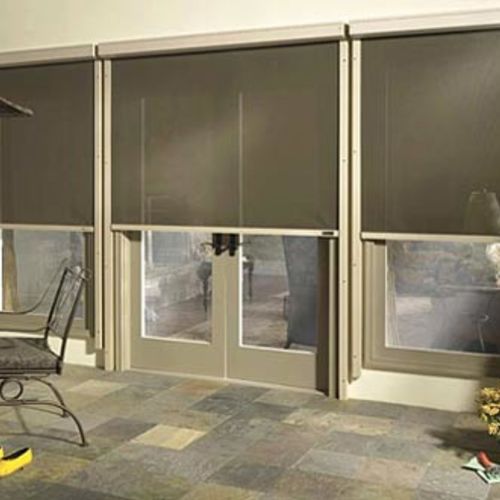






19 Comments
Is this only a problem with air conditioned homes? If my house wasn't air conditioned, or we don't run the air conditioner and just open the windows, the humidity often will be 65-70%. I don't see how the mold and rot could tell whether the A/C has been running or not, but I also don't recall ever seeing discussion on controlling humidity in non-air conditioned homes.
I've seen some mold in non-air conditioned homes in very humid climates. One area was where objects sat on the concrete floor (which was sometimes below the dew point). Another was underneath roofing panels that were exposed to night sky cooling. Sealing the building up and dehumidifying would have prevented both. In this case (very open, well ventilated homes), probably needed only in the worst conditions (near 100% humidity).
I don't know about "worst conditions," but here in the muggy mid-Atlantic, unconditioned houses frequently/usually/always grow mold at some point during the year. It's usually not a lot of mold, just a light haze on everything soft. Smells musty. Hard to get rid of the smell, even if you start dehumidifying and/or conditioning. Some people think summer houses at the shore are supposed to smell that way.
Trevor, as Jon R and Peter Engle have said, yes, you can get mold in houses that don't have air conditioning. I grew some mold in a closet back in the '80s when I lived in Louisiana by turning the AC off and running the whole-house fan at night. Generally, though, there won't be as much because the surfaces won't be 2 or 5 or 10 degrees below the dew point without air conditioning.
You can't control humidity in a house that's open to the outdoors. And if you don't have air conditioning, it's hard to keep a house closed up for long.
In Hawaii, it's all-too-common to see mold in unconditioned homes. Visited one newly-built high-end custom (~$5+M) and the vapor flowing thru the concrete floor was astounding. 1/8" fuzz everywhere over the concrete - seemed like vapor was pushing salts out of the concrete - had two portable dehumidifiers going full blast 24/7 and yet humidity was sky-high. The home had a perimeter fish pond and it was obviously weeping moisture thru the slab - clueless owner should have been suing the architect/builder to do expensive foundation remediation to control the vapor drive. I was shocked - never seen anything like it. The saving grace was it was - mostly - concrete exterior walls - but I'd hate to see what was lurking behind the interior wood framing/roof.
I don't know what's the big deal... 68°F is THE standard TX setting in the Summer! ;-))
Hey, I'm not judging, Armando! Just laying out the potential consequences. But I'm sure the people who do that in the houses you design are fine.
Just being facetious... Ha!
I do like it at 70*F but I hope that with the RH at 35-40% things will be ok. Location is NW Rhode Island.
Electricity not bad with a GSHP.
Under #7 you have a link to a video of John Proctor discussing units with bypass ducts. I just happen to have had a bypass duct installed. My house was the feature of the Q&A spotlight a few months ago. https://www.greenbuildingadvisor.com/article/energy-upgrades-on-a-budget
The new unit simply will not keep up with the load on the second floor of the house. I am wondering if that could have anything to do with the bypass?
My local contractor is adamant that we sized the unit too small. We have a 2.5 ton Carrier for 1900 sf (more sf on second floor because of a bonus room over the garage). Based on the research I've done on this site, Allison's site, AND the manual J's I had done...I don't believe the unit is undersized.
We have discovered that much of the new ductwork that was installed (in the garage before it joins the existing trunk lines) was simply not sealed well at all. The installation also has built in airflow restrictions with no smooth curves of the ductwork. It's just one box attached to another box attached to another box attached to the trunk line.
I am working with someone to redo one of the trusses between the floors so we can smooth out the airflow. I am also wondering if we should ditch the bypass? If we do that should we ditch the zoning altogether? Should I just zone at the registers?
Any help is appreciated.
I'd temporarily disable the zoning and bypass and then balance was well as possible at the registers (probably meaning upstairs registers are fully open). See how you like it.
If the balance is too variable, then put back partial zoning - where the dampers only partially close. Fully closing dampers are the #1 mistake in zoning.
I just looked back at the post you linked to, Andrew, and see that you installed a single speed heat pump. We always try to talk clients out of zoned systems up front, but sometimes we can't. One thing we really, really don't like is zoning with a single speed system. Whenever you don't have all zones calling for air, the system will be running at full speed, so it's going to be oversized AND you have find a way to deal with all the excess air flow.
Now, I don't think that's your problem with the upstairs not cooling. I think they probably just didn't send enough air up there, and that may require serious duct modification. Maybe straightening the ducts as you're doing will do the trick, though.
Given John Proctor's article you refered to I adjusted the static pressure on the bypass (increasing the static pressure) and so far the system is working better. That being said, the last few days have been cooler with a lot of rain. I'm still gonna work on smoothing out the air flow as well. Hopefully, between the two adjustments everything will work better. Thank you
A strategy to consider is to do more dehumidification and less cooling. With a lower interior dew point, you can be comfortable at a higher temperature. And you help avoid condensation and make it easier for any that occurs to dry.
Most newer mini-splits have a Dry Mode that will pull a lot of water out of a house in the summer. With a very low cost to run, you can get it down to the low to mid 50's%RH and be comfortable at indoor temps around 80 degrees, and greatly reduce or stop mold issues. We have done this for a few summers now. Humidity, unlike heat, quickly equilibrates in the open parts of the home.
This also will reduce your carbon footprint without much change in comfort and much less pain in your wallet. Where we live most folks spend over $400 a month on AC, us more like $60 a summer.
"you can get it down to the low to mid 50's%RH and be comfortable at indoor temps around 80 degrees,"
I can't, not with mini splits. Even on dry mode, they remove more heat than moisture. Running just the mini splits gets the house down to 60-65% at 73F. Running them more to than that just lowers the temp without moving the RH, or actually driving it up. Running the mini splits in dry mode is actually less energy efficient, so I'm a little skeptical of your $60 a summer claim, if your neighbours are spending twenty times that much. Just running in dry mode won't yield savings like that. Something doesn't add up.
I have a Mitsubishi system which includes a couple of MSZ-GL-12NA wall units. Their controllers have a Dehumidify setting. My interior RH was around 52% yesterday and that seems to be making my click engineered flooring squeak, so I decided to try for some dehumidifying. Initially, RH went to 50% but then rose to 56% and the room got too cool (68F). There were only a few drops coming from the drain. Outdoor RH is in the 65% range.
So, I have to conclude the dehumidifying function of the MSZ-GL-12NA unit is ineffective below about 55%. I'll try a few more experiments if I can persuade my wife it's worthwhile to suffer a bit for science.
On reflection, it occurs to me the increase in RH is probably related to the decrease in temperature. Gotta see if I can find a table or graph that will give me detailed enlightenment on that subject.
Trevor, you say running mini-splits in dry mode is actually less efficient. Can you explain that? And does anyone know how dry mode actually works? Seems like it would ideally be a cool-condense-reheat process, which is a bit complex for a device not purpose built for dehumidifying.
One other consequence of unrealistic temperature settings is acclimatization. Bodies need time to adjust to seasonal changes, and large temperature swings increase susceptibility to colds and infections, a harder time adjusting to exercise/outdoor work, maintaining overall comfort, etc.. But try telling that to a 16-year-old son who keeps his room a.c. at 65° . . .
Andrew Bennett, Hopefully as you straighten and reroute the duct system, and replace boxes with metal elbows and Y’s, your static pressure will drop further allowing you to reduce the bypass further or eliminate it. But, if you start closing registers to balance the airflow, you will increase static, causing more bypass. I think I would remove the bypass completely and adjust the bleed off on the zone dampers to get an acceptable static. What is total static? Or what is the bypass static set at? What is return static vs supply static?
Log in or create an account to post a comment.
Sign up Log in